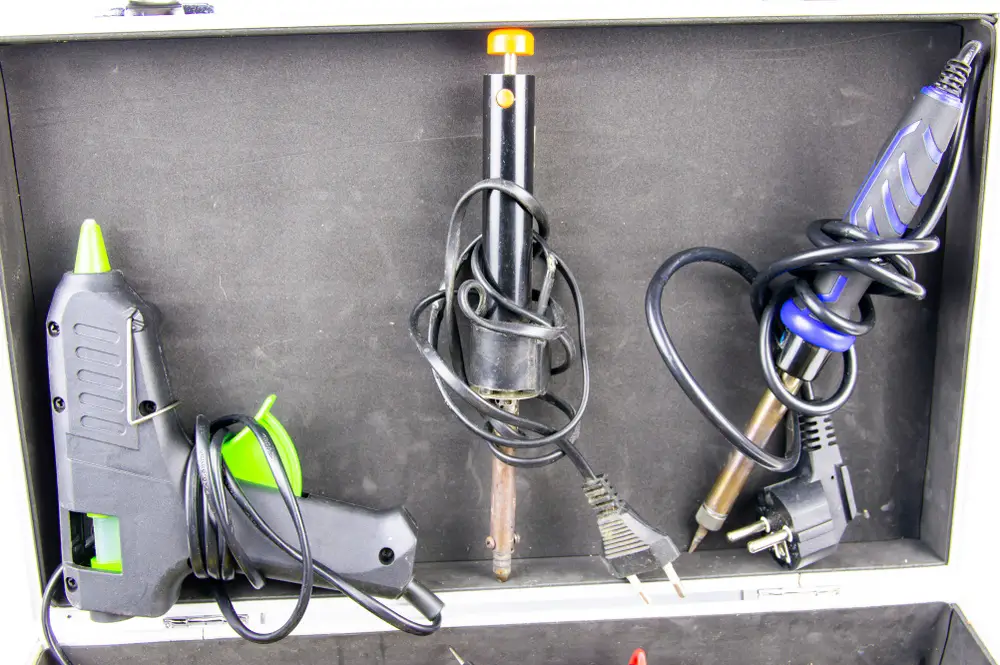Soldering irons should be appropriately stored and maintained to provide hours of dependable service. The tip is the heart of any soldering device as it transfers the heat required to melt the solder and connect joints. As such, proper storage and maintenance of the iron are not complete without caring for the tip adequately. Here are some ways:
Tin the Tip
It is the most crucial step to ensure your soldering iron remains in top-notch condition. The tip should be tinned before and after use as well as in between soldering sessions. Tinning involves covering the tip with a thin layer of solder to prevent oxidation.
Soldering tips are made of copper, which is known to oxidize rapidly. The layer affects the performance of the iron as heat is not transferred efficiently. Tinning makes the work easier and helps the solder melt and flow smoothly. It enhances efficiency by creating a bridge between the tip and the layer being soldered.
The process is pretty straightforward as you only need to clean the tip and apply a fresh coat of solder (a small amount).
You can use a damp sponge or unique brass wool, which contains soft metal shavings layered with flux. When cleaning, the tip thrust the tip into the shavings several times until it develops a shiny appearance. The brass wool helps avoid thermal shock and clean the tip faster than a damp sponge.
Damaged tips need a little more work hence the need to use a unique cleaning-polishing bar. Another technique involves gently rubbing the oxide off using a soft steel brush or an emery cloth. Avoid filing the tip when cleaning.
Soldering tips are made of copper and a protective iron plating; hence, once the plating is removed, the tip is damaged. Copper is a choice metal for soldering tips because it is a good conductor of heat; however, when it is exposed, it dissolves into the solder rapidly.
When applying the solder, you can make a light dip in rosin-solder or use a tip tinner. It is a mixture of flux and solder paste, and the flux is stronger to help rid of oxides. Alternatively, thrust the tip in tip cleaner a few times until an even coat of solder is created.
Proper Storage of the Tip
Storage impacts the performance and the life of the tip. If storing it for a short period, e.g., between soldering sessions, ensure it remains secure in the iron holder.
You also need to switch the iron off as leaving it at the operating temperature only reduces its life. If you are forgetful, look for soldering irons with an idle setting. The feature keeps the iron at a low temperature, which can still be used to solder objects.
However, if storing the tip for an extended period, you need to clean and tin the tip before putting it away. Then, store it in a sealed container, e.g., a case or a bag to prevent oxidation, contamination and protect it from the effects of humidity. You also need to loosen the nut holding the tip in place to prevent seizing.
Causes of Detinning
- Operating the iron at extremely high temperatures, which speeds up oxidation. Maintain a temperature of 800 degrees Fahrenheit. High temperatures facilitate the formation of iron oxides
- Failure to keep the tip covered with solder in between soldering sessions
- Using solder that has low tin content
- Not using flux when soldering
- Using a small solder wire. Such wires have a small diameter hence likely to carry inadequate flux to keep the tip tinned adequately
- Using regular clothing to wipe the tips (paper towels, dry sponges, or metal wool instead of wet cellulose sponge)
Restoring a Detinned Soldering Tip
You can restore a detinned soldering tip using these three methods:
- Using a tip cleaner: This paste is halide free and provides quick and safe re-tinning of oxidized tips. You only need to wipe the tip utilizing the cleaner until a bright, shiny tinning surrounds the end
- Using the traditional solder wire with rosin base flux: the wire should be thick enough (0.32 inches or larger) to apply adequate flux on the tip. Follow it up with a coat of solder
- Use a polishing bar: The bar is made from polyurethane foam and is embedded with abrasives which polish the tip removing surface oxides


